Numerical Study on the Power Efficiency and Flow Characteristics of a New Type of Wind Energy Collection Device
Abstract
1. Introduction
2. Original Model and Improved Design
2.1. Original Model
2.2. Improved Design
3. Numerical Method
3.1. Governing Equations
3.2. Solution Methodology
3.3. Mesh and Boundary Conditions
3.4. Mesh Sensitivity Study and Validation
4. Results and Discussion
4.1. Performance of the Original Model
4.2. Performance of Improved Design
4.3. Incoming Velocity Considering Atmospheric Boundary Layer
5. Conclusions
Author Contributions
Funding
Conflicts of Interest
References
- Amiri, H.A.; Shafaghat, R.; Alamian, R.; Taheri, S.M.; Shadloo, M.S. Study of horizontal axis tidal turbine performance and investigation on the optimum fixed pitch angle using CFD: A case study of Iran. Int. J. Numer. Methods Heat Fluid Flow 2019, 30, 206–227. [Google Scholar] [CrossRef]
- Abdelmalek, Z.; Alamian, R.; Shadloo, M.S.; Maleki, A.; Karimipour, A. Numerical study on the performance of a homogeneous charge compression ignition engine fueled with different blends of biodiesel. J. Therm. Anal. Calorim. 2020, 1–11. [Google Scholar] [CrossRef]
- Zhang, L.; Gao, J. Exploring the effects of international tourism on China’s economic growth, energy consumption and environmental pollution: Evidence from a regional panel analysis. Renew. Sustain. Energy Rev. 2016, 53, 225–234. [Google Scholar] [CrossRef]
- Katircioglu, S.T. International tourism, energy consumption, and environmental pollution: The case of Turkey. Renew. Sustain. Energy Rev. 2014, 36, 180–187. [Google Scholar] [CrossRef]
- Henriques, R.D.S.; Saldanha, R.R.; Coelho, L.M.G. An Air Pollutant Emission Analysis of Brazilian Electricity Production Projections and Other Countries. Energies 2019, 12, 2851. [Google Scholar] [CrossRef]
- Keramydas, C.; Papadopoulos, G.; Ntziachristos, L.; Lo, T.-S.; Ng, K.-L.; Wong, H.-L.A.; Wong, C.K.-L. Real-World Measurement of Hybrid Buses’ Fuel Consumption and Pollutant Emissions in a Metropolitan Urban Road Network. Energies 2018, 11, 2569. [Google Scholar] [CrossRef]
- Blaha, U.; Sapkota, B.; Appel, E.; Stanjek, H.; Rößler, W. Micro-scale grain-size analysis and magnetic properties of coal-fired power plant fly ash and its relevance for environmental magnetic pollution studies. Atmos. Environ. 2008, 42, 8359–8370. [Google Scholar] [CrossRef]
- Yang, S.; Yuesi, W.; Changchun, Z. Measurement of the vertical profile of atmospheric SO2 during the heating period in Beijing on days of high air pollution. Atmos. Environ. 2009, 43, 468–472. [Google Scholar] [CrossRef]
- Kusiak, A.; Zhang, Z.; Verma, A. Prediction, operations, and condition monitoring in wind energy. Energy 2013, 60, 1–12. [Google Scholar] [CrossRef]
- Willis, D.; Niezrecki, C.; Kuchma, D.; Hines, E.; Arwade, S.; Barthelmie, R.; DiPaola, M.; Drane, P.; Hansen, C.; Inalpolat, M.; et al. Wind energy research: State-of-the-art and future research directions. Renew. Energy 2018, 125, 133–154. [Google Scholar] [CrossRef]
- Dai, K.; Bergot, A.; Liang, C.; Xiang, W.-N.; Huang, Z. Environmental issues associated with wind energy—A review. Renew. Energy 2015, 75, 911–921. [Google Scholar] [CrossRef]
- Sun, X.; Huang, D.; Wu, G. The current state of offshore wind energy technology development. Energy 2012, 41, 298–312. [Google Scholar] [CrossRef]
- Omer, A. Overview of renewable energy sources in the Republic of the Sudan. Energy 2002, 27, 523–547. [Google Scholar] [CrossRef]
- O’Brien, J.; Young, T.; O’Mahoney, D.; Griffin, P. Horizontal axis wind turbine research: A review of commercial CFD, FE codes and experimental practices. Prog. Aerosp. Sci. 2017, 92, 1–24. [Google Scholar] [CrossRef]
- Bai, C.-J.; Wang, W.-C. Review of computational and experimental approaches to analysis of aerodynamic performance in horizontal-axis wind turbines (HAWTs). Renew. Sustain. Energy Rev. 2016, 63, 506–519. [Google Scholar] [CrossRef]
- Ahmed, N.A.; Cameron, M. The challenges and possible solutions of horizontal axis wind turbines as a clean energy solution for the future. Renew. Sustain. Energy Rev. 2014, 38, 439–460. [Google Scholar] [CrossRef]
- Möllerström, E.; Gipe, P.; Beurskens, J.; Ottermo, F. A historical review of vertical axis wind turbines rated 100 kW and above. Renew. Sustain. Energy Rev. 2019, 105, 1–13. [Google Scholar] [CrossRef]
- Kumar, R.; Raahemifar, K.; Fung, A.S. A critical review of vertical axis wind turbines for urban applications. Renew. Sustain. Energy Rev. 2018, 89, 281–291. [Google Scholar] [CrossRef]
- Sagharichi, A.; Zamani, M.; Ghasemi, A. Effect of solidity on the performance of variable-pitch vertical axis wind turbine. Energy 2018, 161, 753–775. [Google Scholar] [CrossRef]
- Allaei, D.; Andreopoulos, Y. INVELOX: Description of a new concept in wind power and its performance evaluation. Energy 2014, 69, 336–344. [Google Scholar] [CrossRef]
- Allaei, D.; Tarnowski, D.; Andreopoulos, Y. INVELOX with multiple wind turbine generator systems. Energy 2015, 93, 1030–1040. [Google Scholar] [CrossRef]
- Sotoudeh, F.; Kamali, R.; Mousavi, S.M. Field tests and numerical modeling of INVELOX wind turbine application in low wind speed region. Energy 2019, 181, 745–759. [Google Scholar] [CrossRef]
- Anbarsooz, M.; Amiri, M.; Rashidi, I. A novel curtain design to enhance the aerodynamic performance of Invelox: A steady-RANS numerical simulation. Energy 2019, 168, 207–221. [Google Scholar] [CrossRef]
- Ducoin, A.; Shadloo, M.S.; Roy, S. Direct Numerical Simulation of flow instabilities over Savonius style wind turbine blades. Renew. Energy 2017, 105, 374–385. [Google Scholar] [CrossRef]
- ANSYS Software Corporation, ANSYS Fluent Theory Guide 15.0; ANSYS: Canonsburg, PA, USA, 2013.
- Tominaga, Y.; Mochida, A.; Yoshie, R.; Kataoka, H.; Nozu, T.; Yoshikawa, M.; Shirasawa, T. AIJ guidelines for practical applications of CFD to pedestrian wind environment around buildings. J. Wind Eng. Ind. Aerodyn. 2008, 96, 1749–1761. [Google Scholar] [CrossRef]
- Roache, P.J. Perspective: A Method for Uniform Reporting of Grid Refinement Studies. J. Fluids Eng. 1994, 116, 405–413. [Google Scholar] [CrossRef]
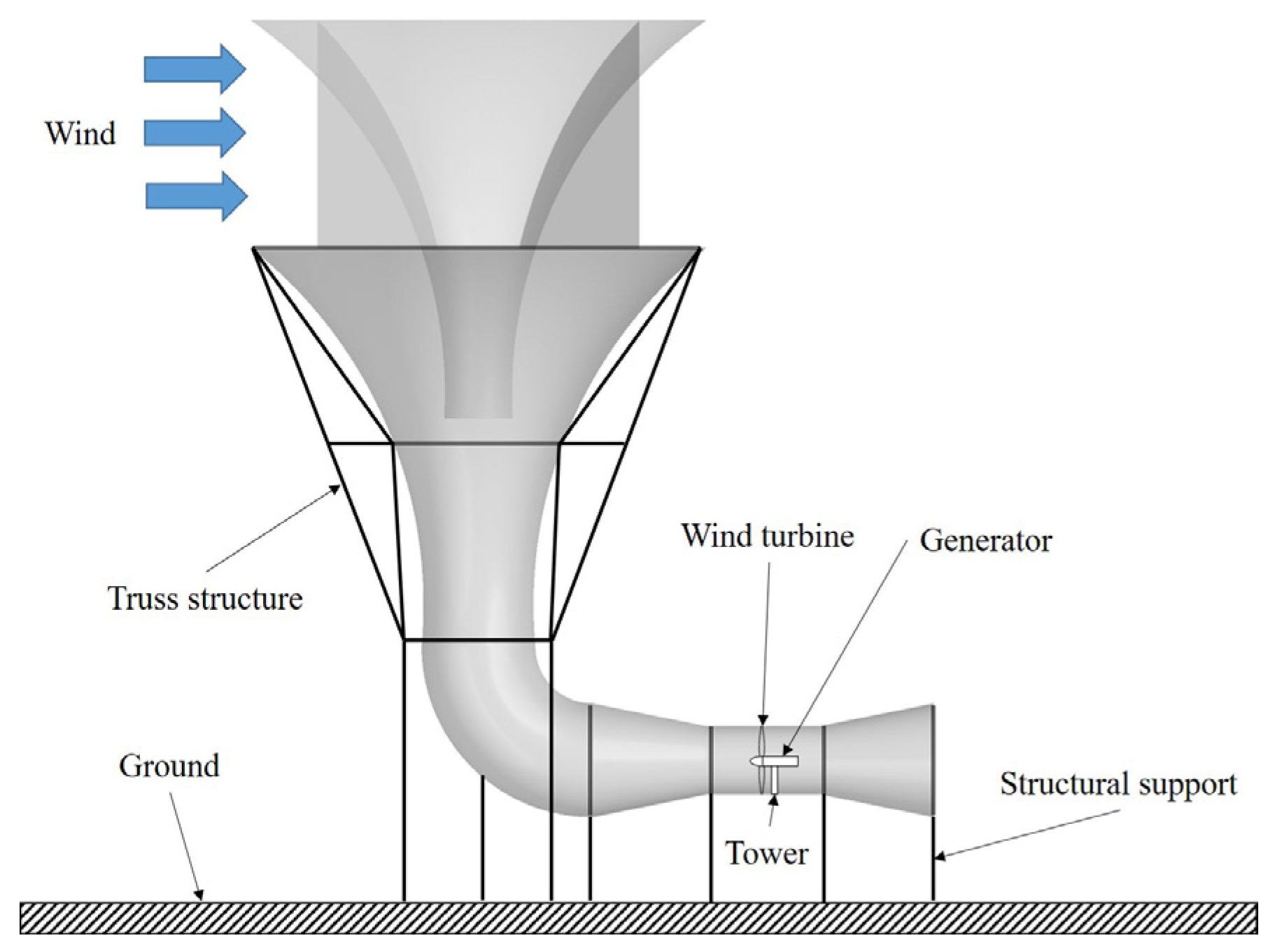
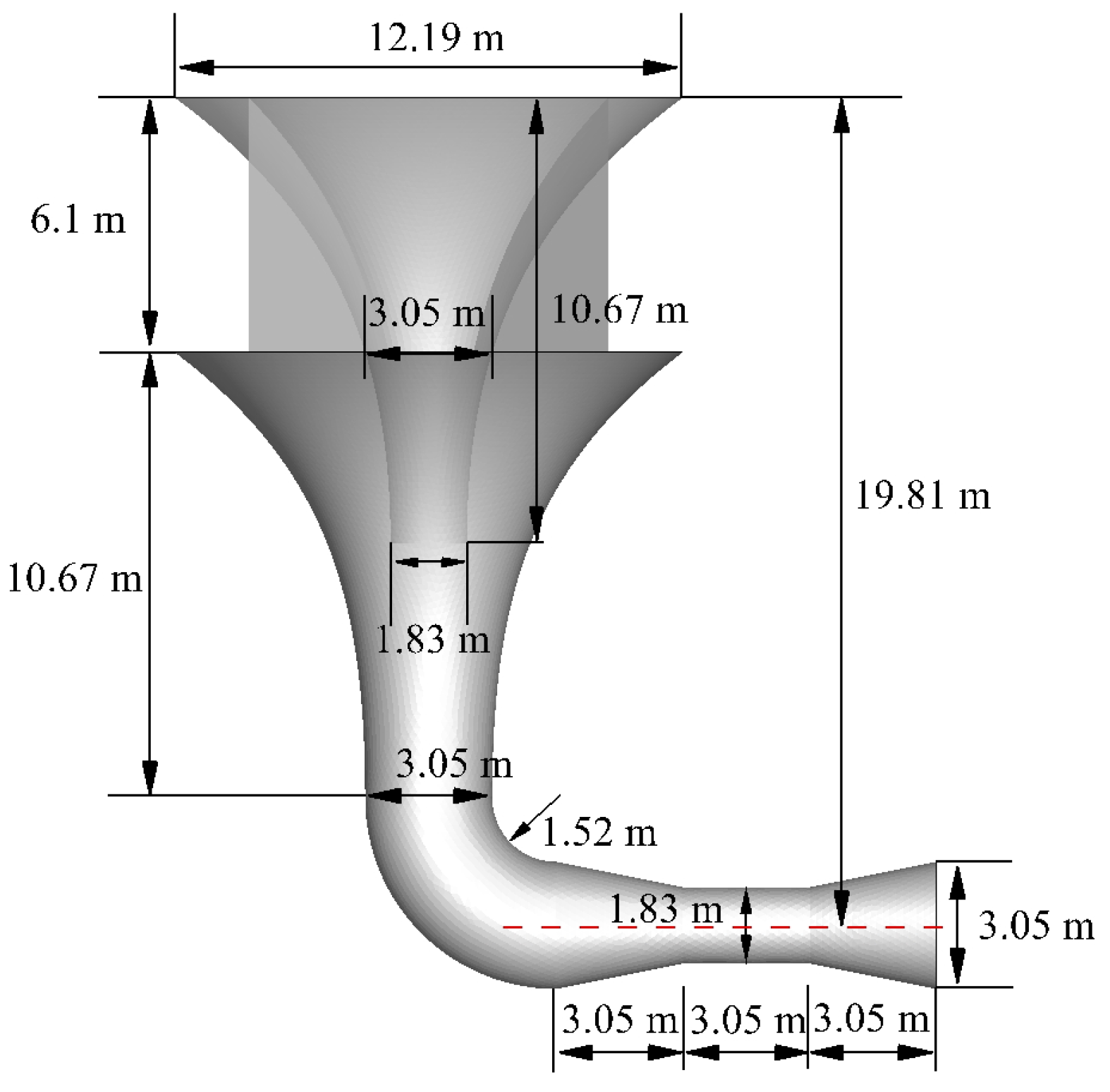
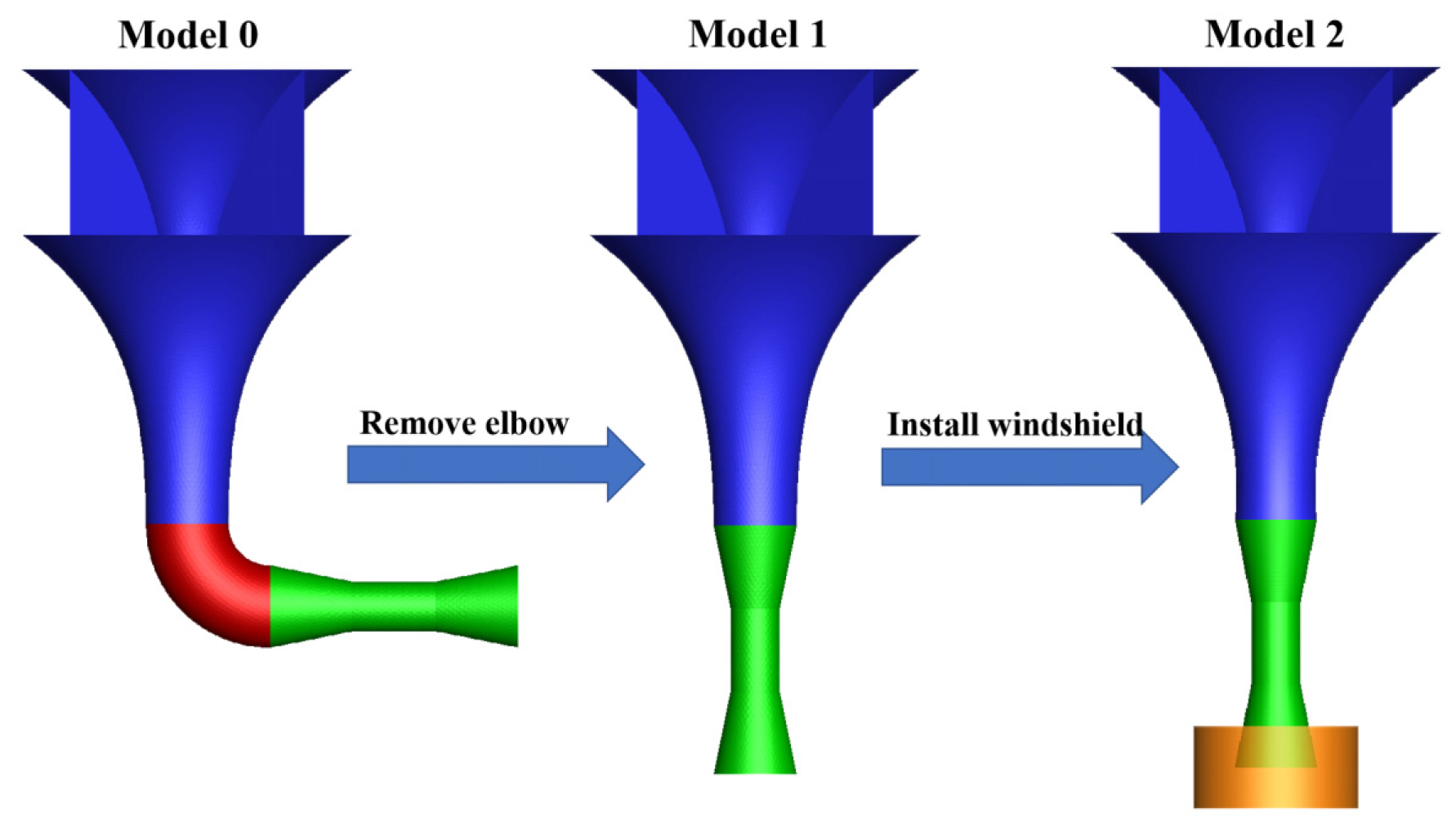
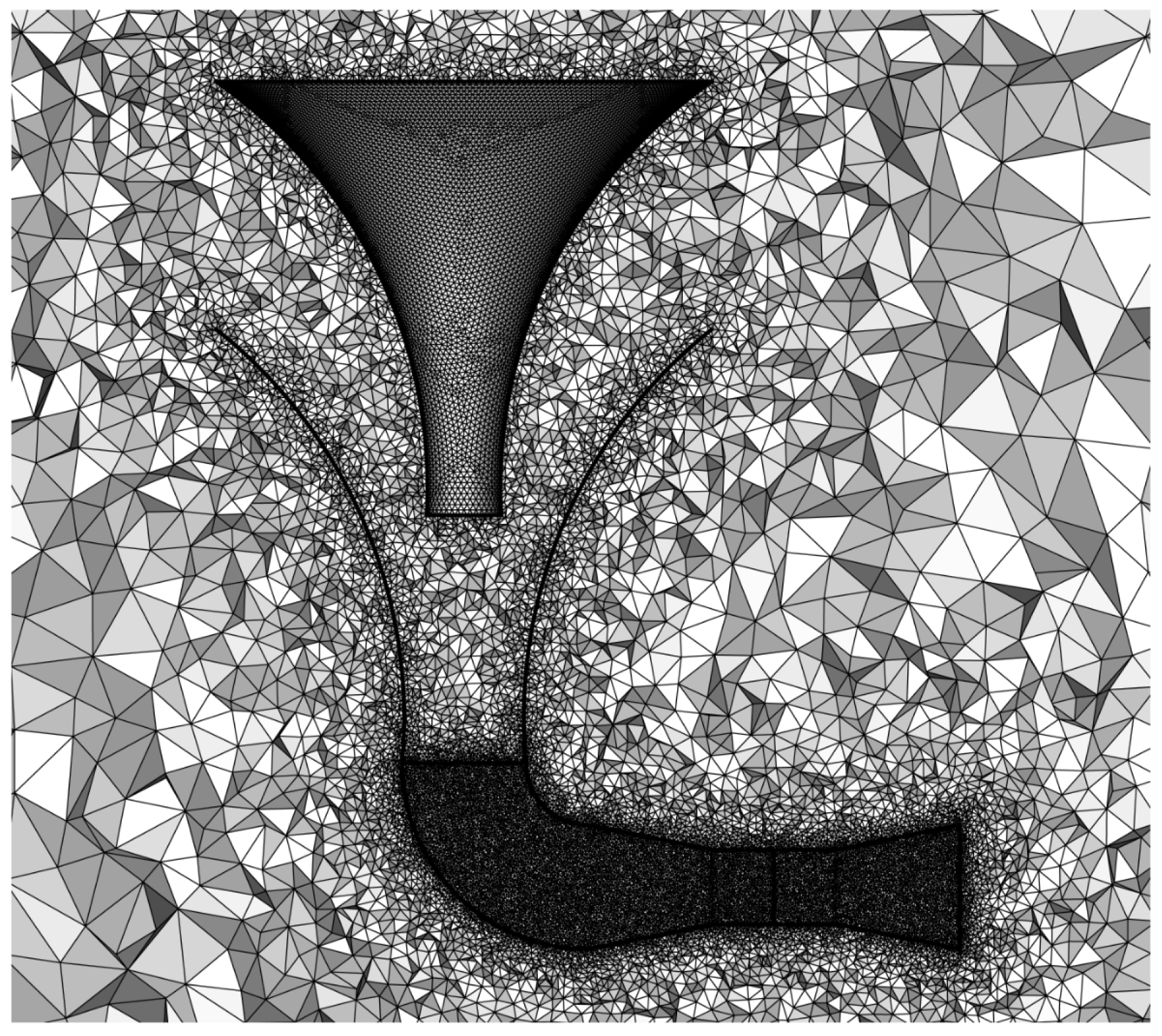
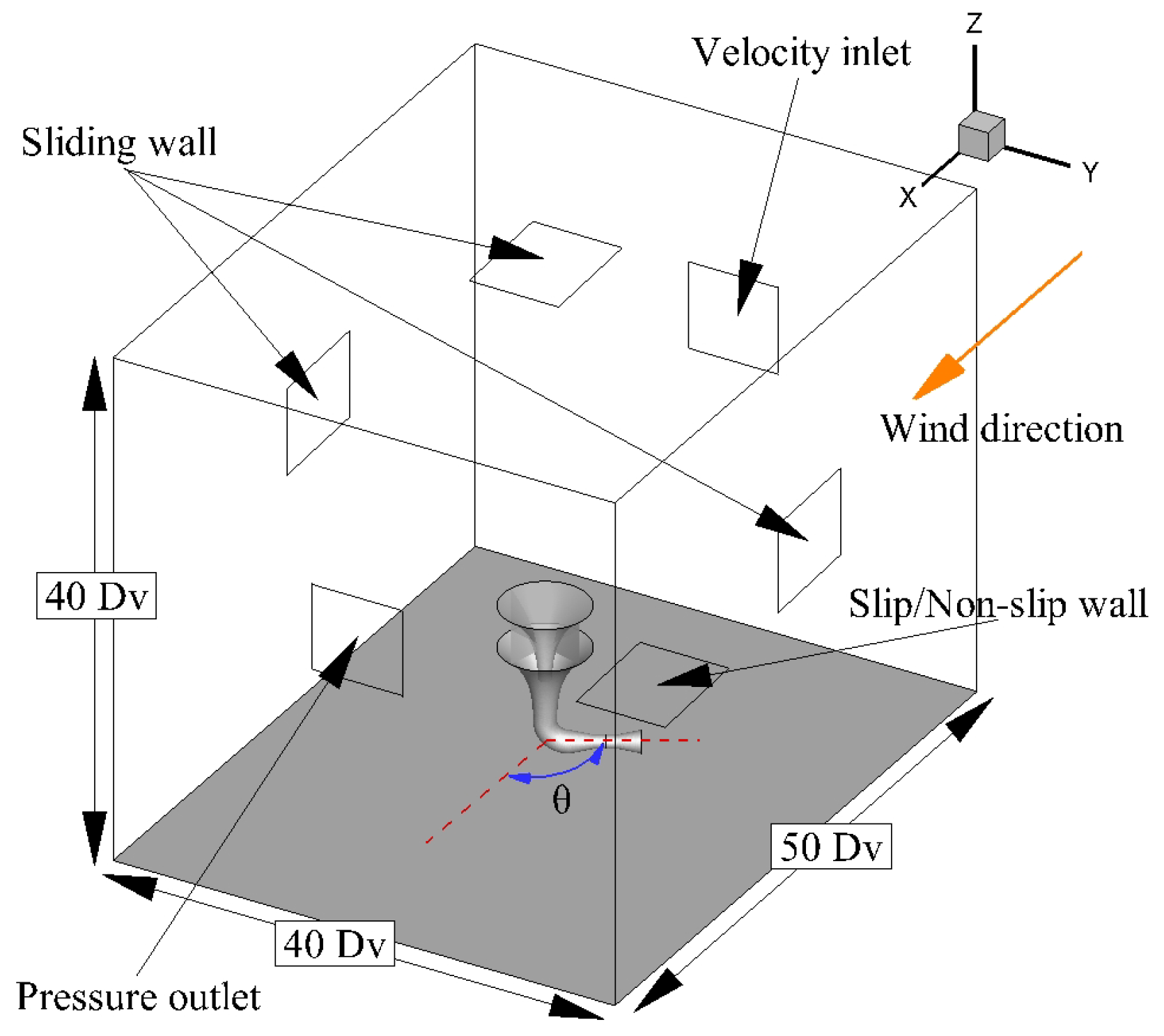
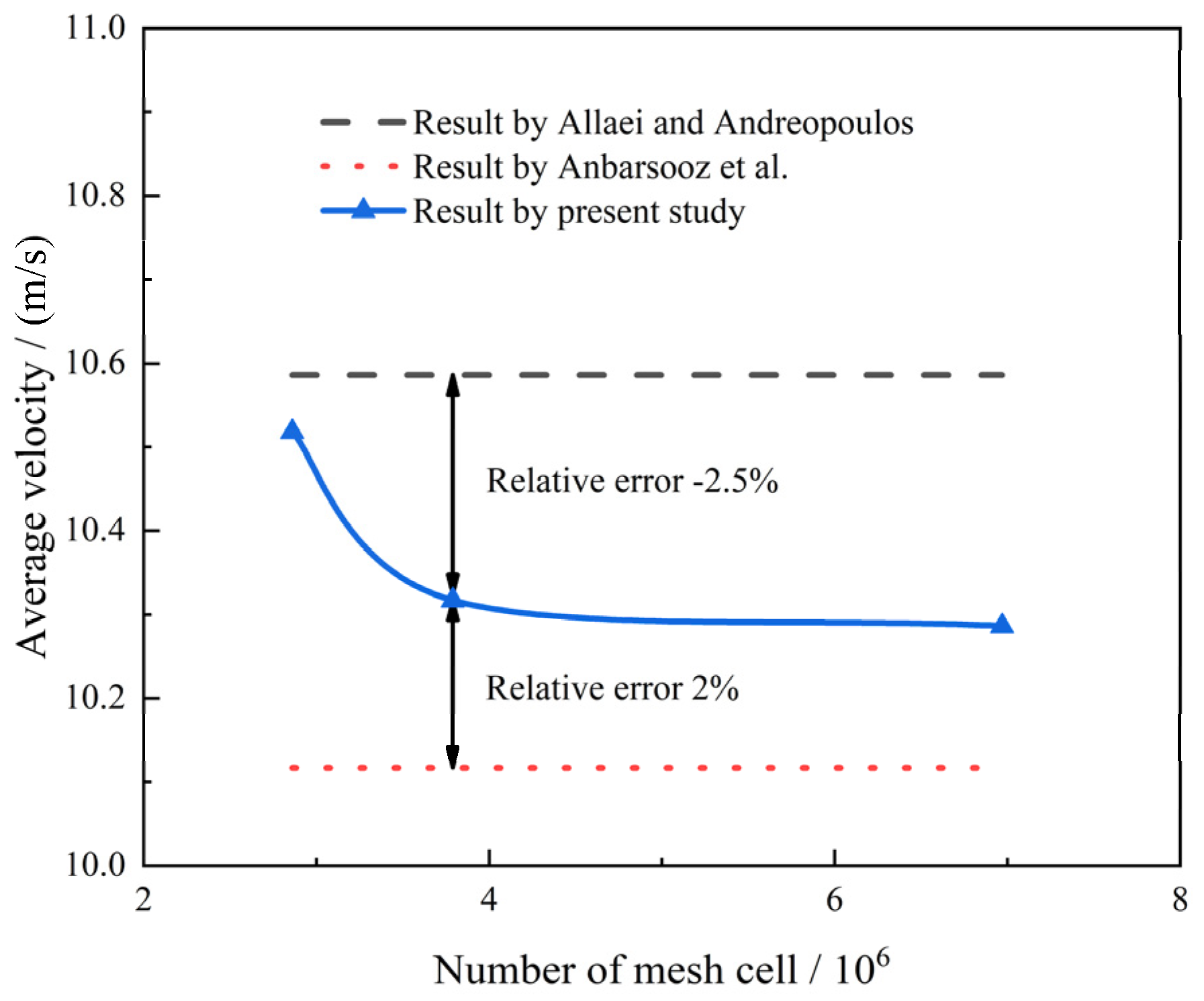

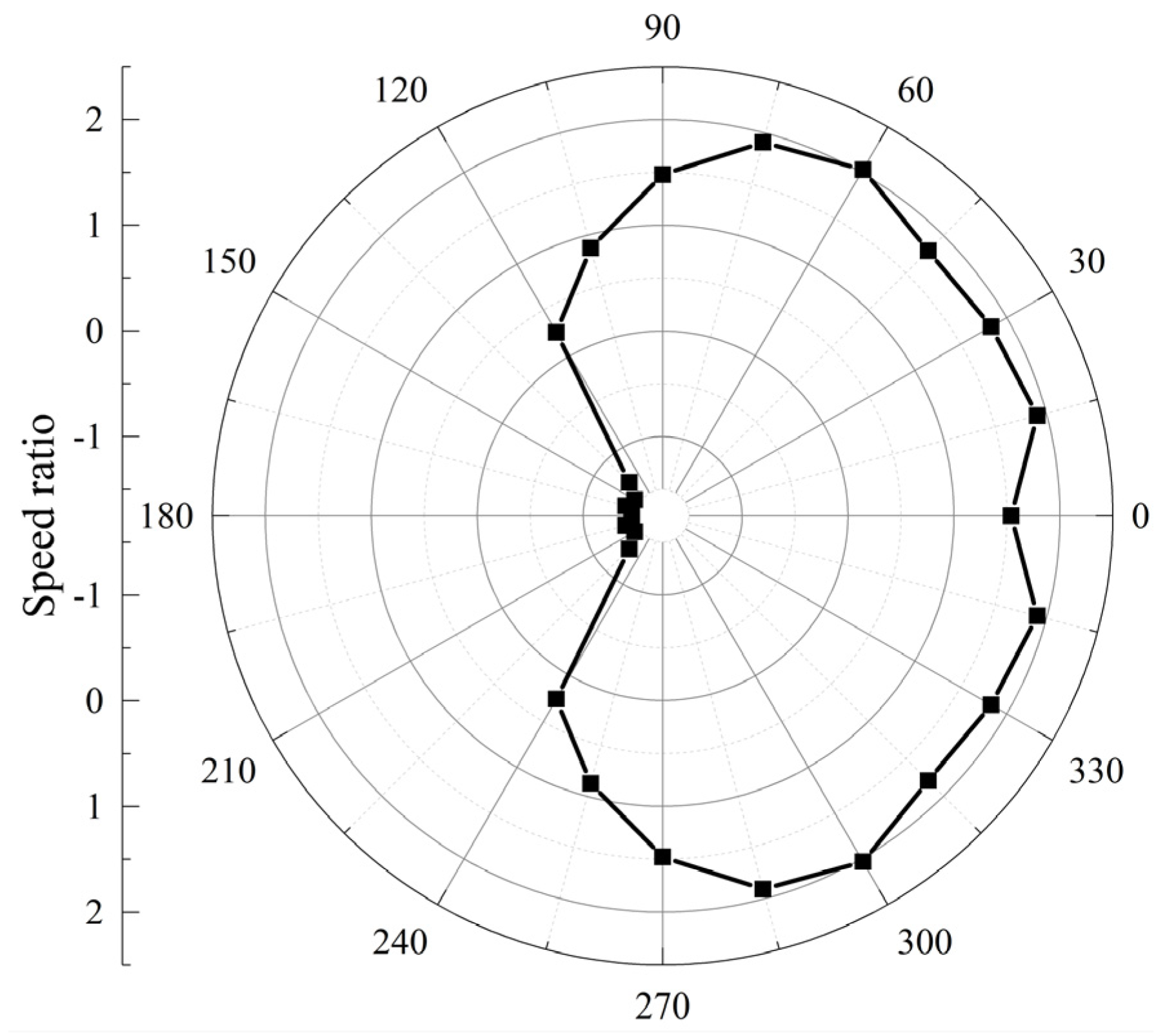
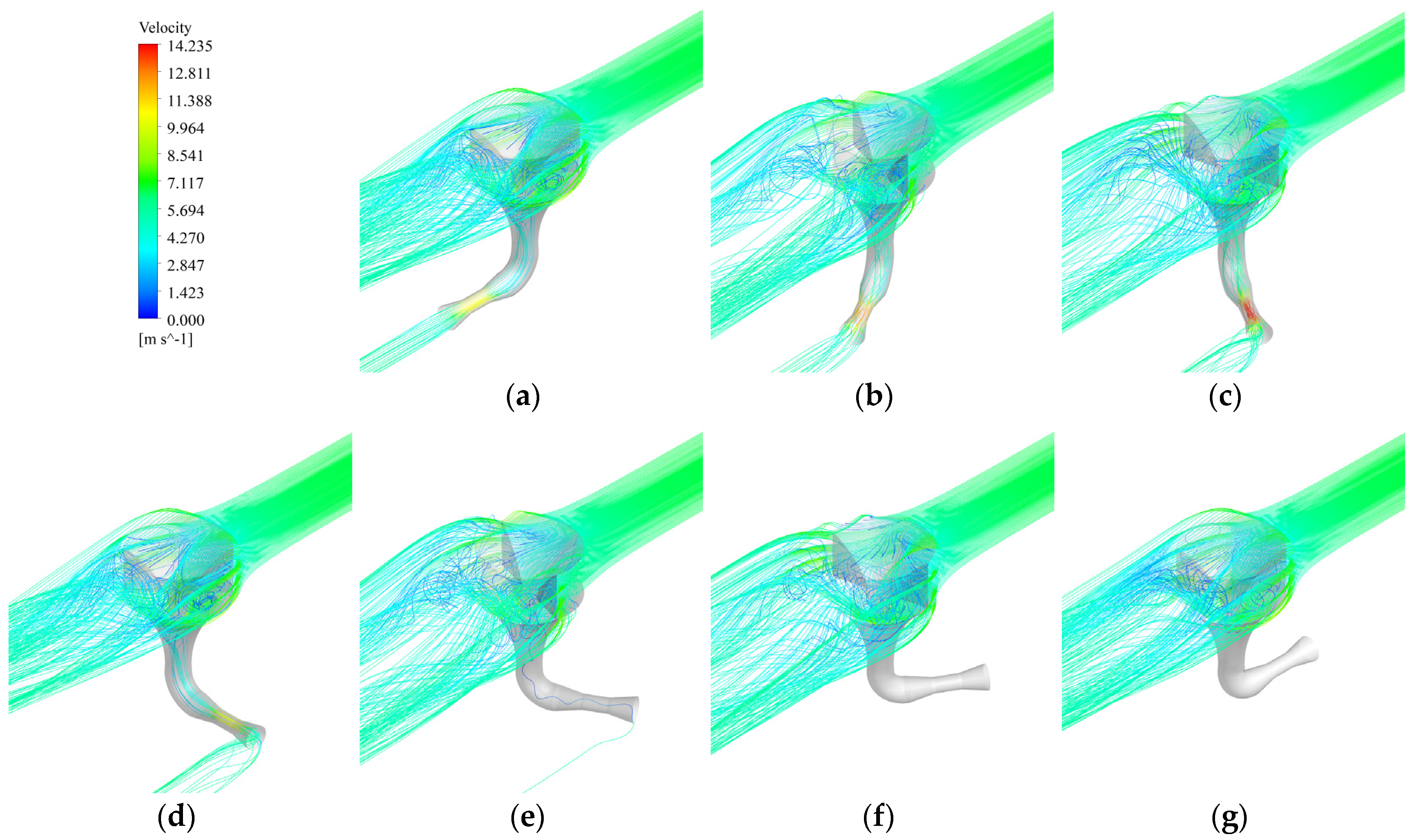
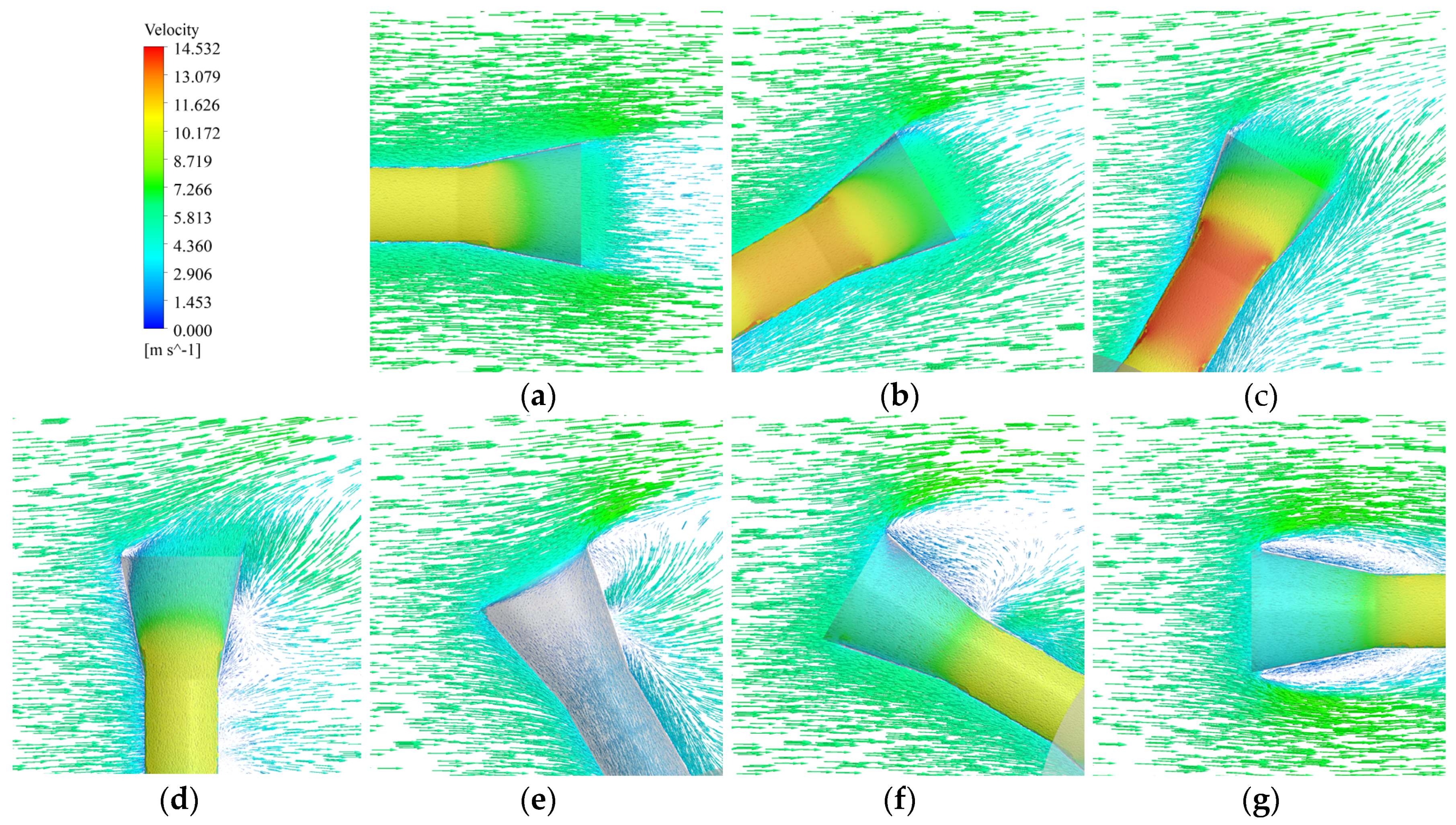
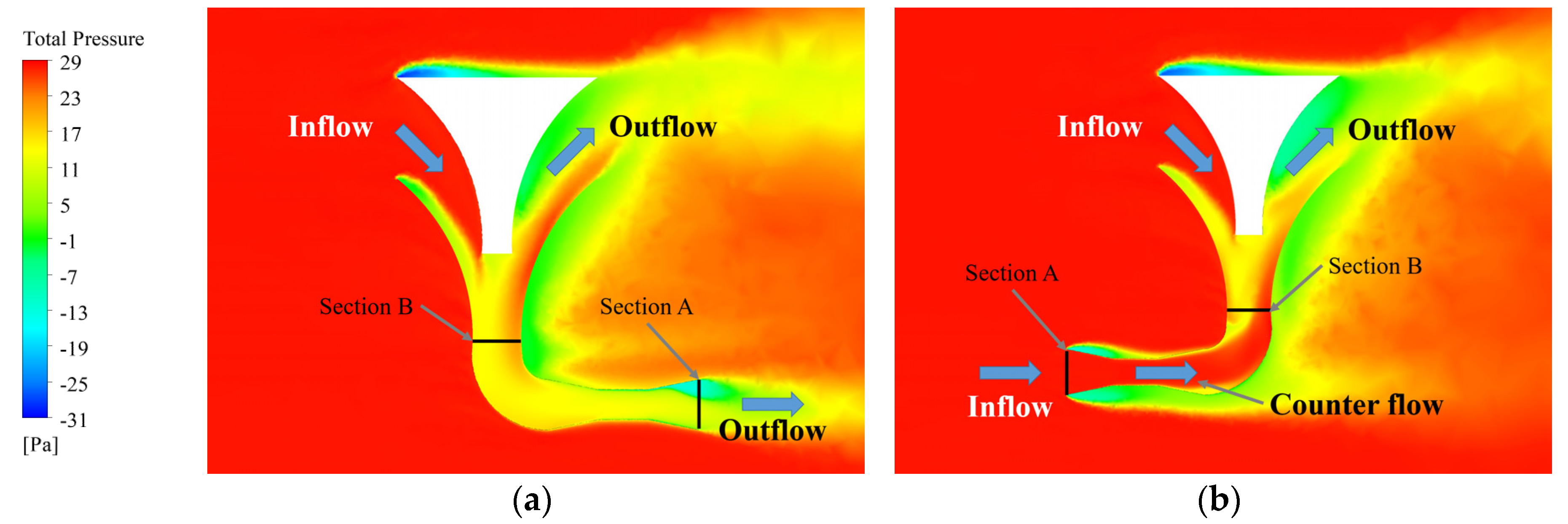
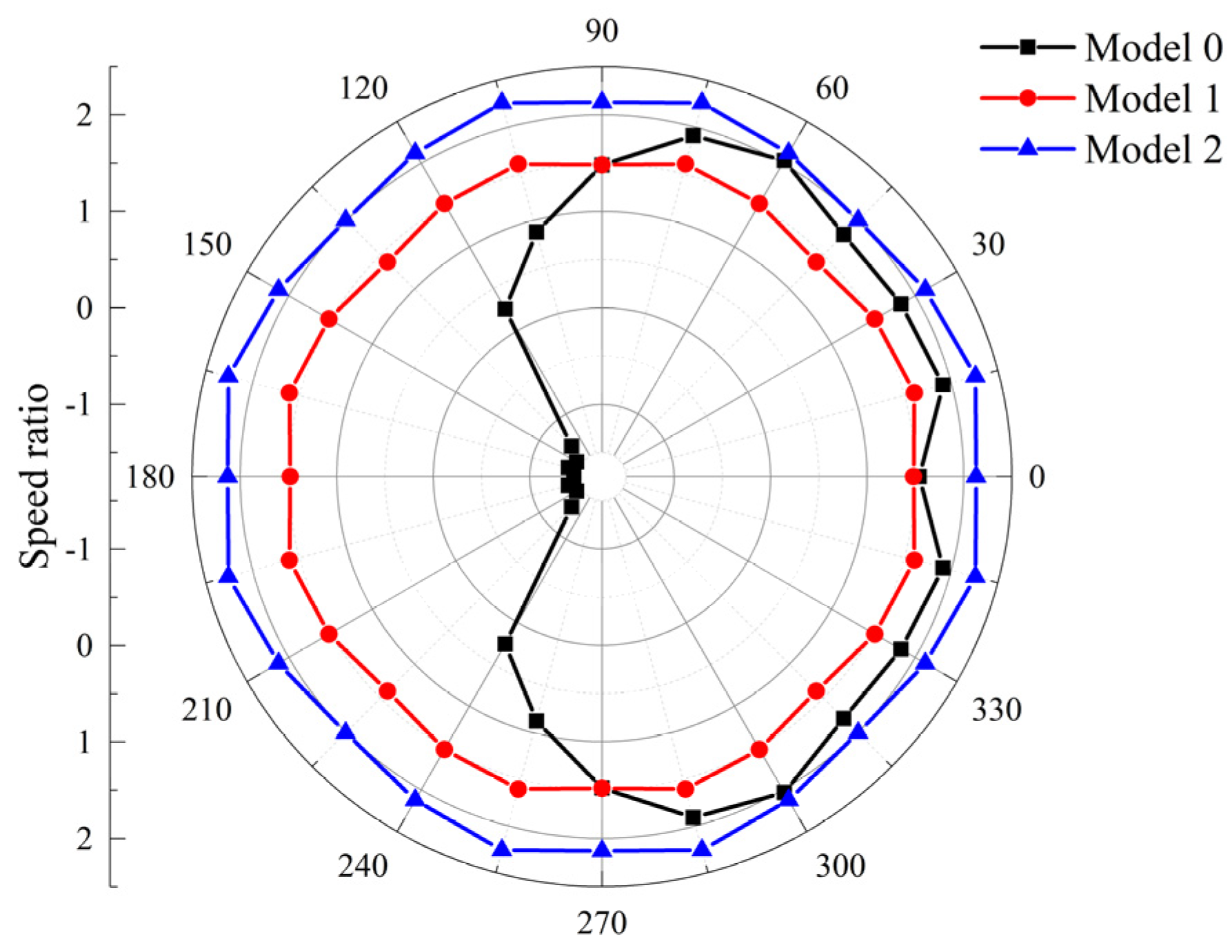

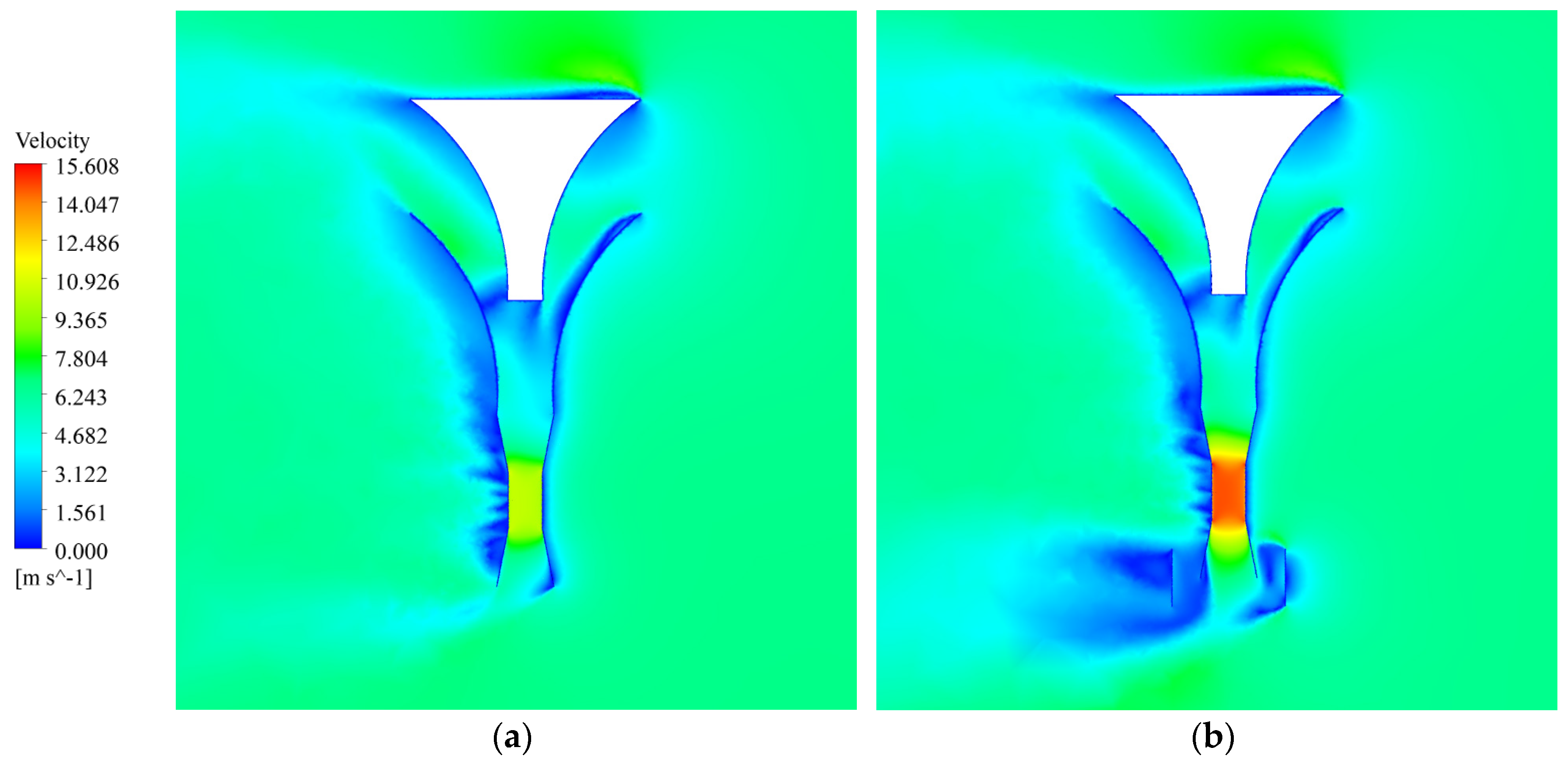
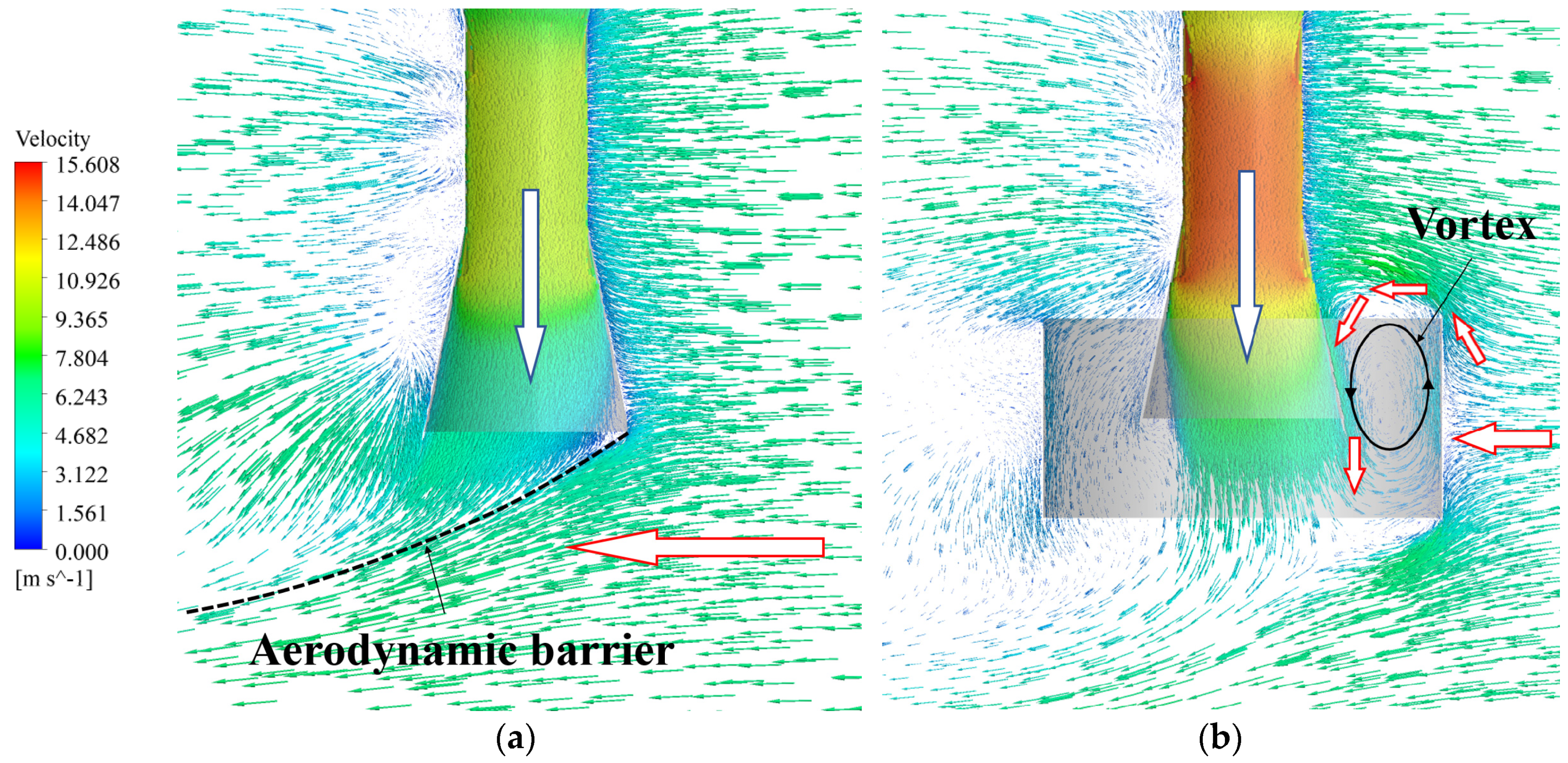
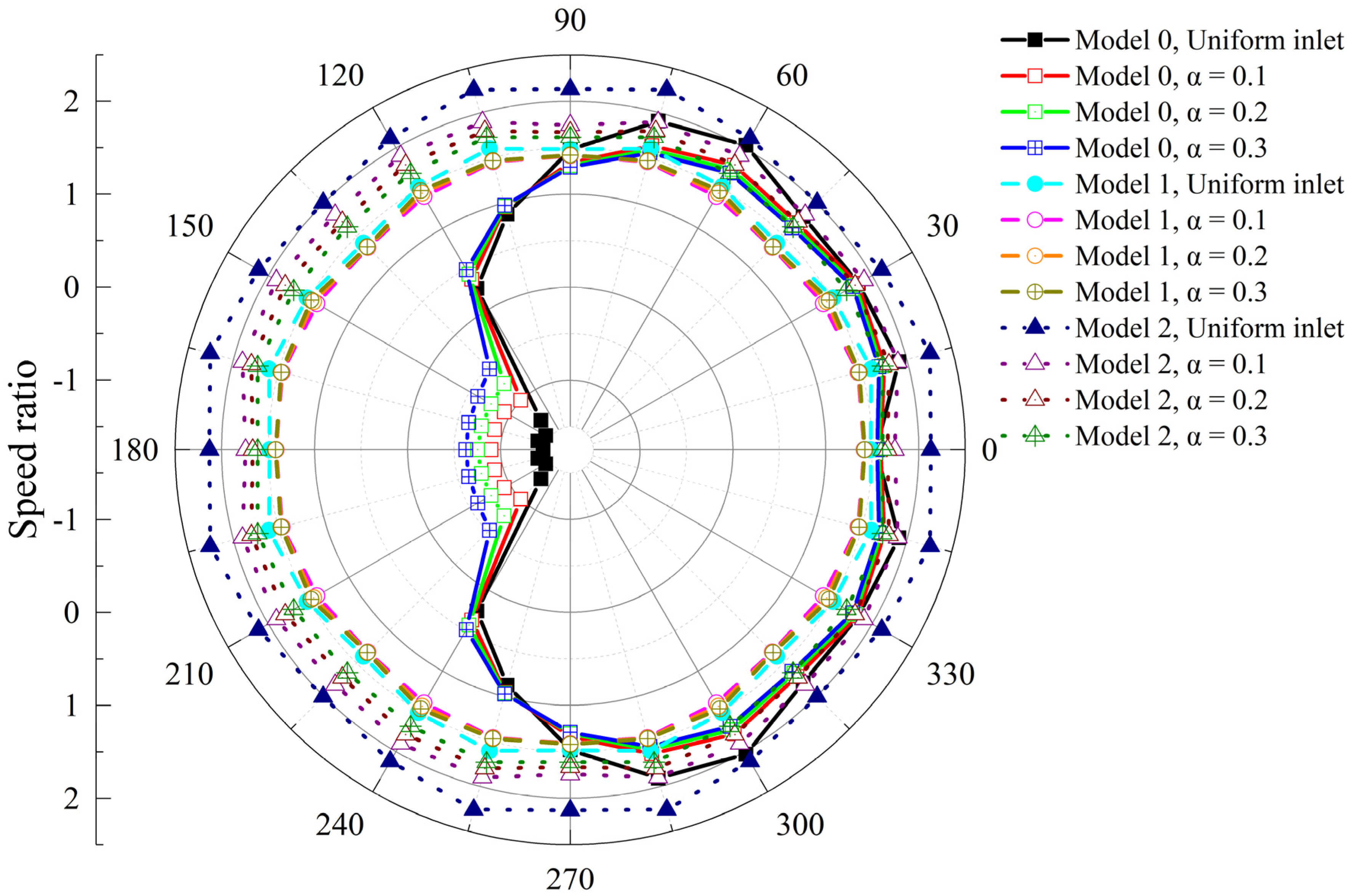

| Mesh | Coarse | Medium | Fine |
|---|---|---|---|
| Average velocity in the Venturi tube, φ, m/s | 10.518 | 10.317 | 10.286 |
| Cell number, N, million | 2.86 | 3.79 | 6.97 |
| Relative error, δ | - | 0.019 | 0.003 |
| Grid refinement ratio, r | - | 1.10 | 1.23 |
| Order of convergence, e | - | 20 | - |
| GCI, % | - | 0.36% | 0.01% |
Publisher’s Note: MDPI stays neutral with regard to jurisdictional claims in published maps and institutional affiliations. |
© 2020 by the authors. Licensee MDPI, Basel, Switzerland. This article is an open access article distributed under the terms and conditions of the Creative Commons Attribution (CC BY) license (http://creativecommons.org/licenses/by/4.0/).
Share and Cite
Ding, L.; Guo, T. Numerical Study on the Power Efficiency and Flow Characteristics of a New Type of Wind Energy Collection Device. Appl. Sci. 2020, 10, 7438. https://doi.org/10.3390/app10217438
Ding L, Guo T. Numerical Study on the Power Efficiency and Flow Characteristics of a New Type of Wind Energy Collection Device. Applied Sciences. 2020; 10(21):7438. https://doi.org/10.3390/app10217438
Chicago/Turabian StyleDing, Li, and Tongqing Guo. 2020. "Numerical Study on the Power Efficiency and Flow Characteristics of a New Type of Wind Energy Collection Device" Applied Sciences 10, no. 21: 7438. https://doi.org/10.3390/app10217438
APA StyleDing, L., & Guo, T. (2020). Numerical Study on the Power Efficiency and Flow Characteristics of a New Type of Wind Energy Collection Device. Applied Sciences, 10(21), 7438. https://doi.org/10.3390/app10217438





